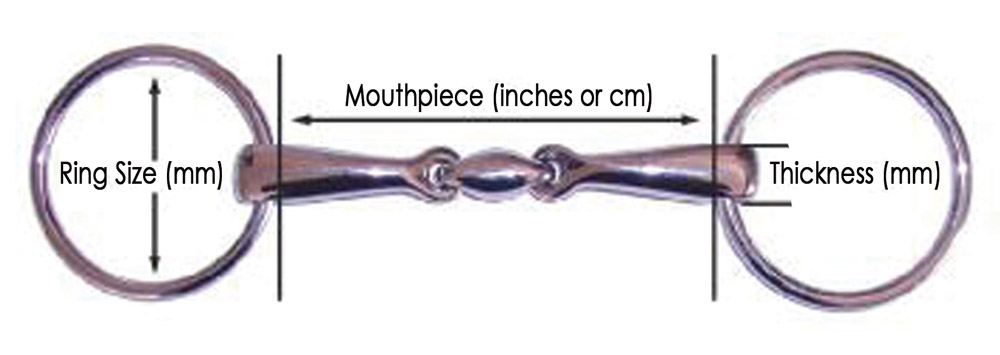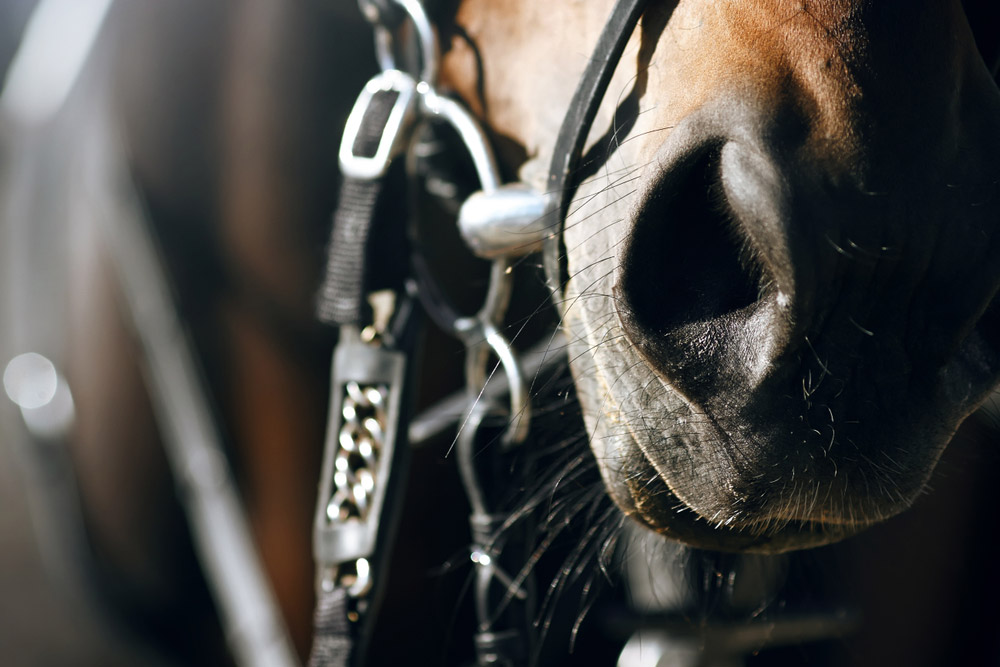Choosing a proper bit is vital so your horse can feel comfy. There are lots of bit options on the market. They may vary in thickness, length, and ring diameter. You have to know how to measure a horse for a bit fit. Horse bits usually come in standard sizes. So you should know if it suits your horse’s mouth well. Otherwise, you may need to consider a custom-made horse bit. All the nuts and bolts are described in this article.
What Is a Horse Bit?
A horse bit is a piece of tack that is placed in the horse’s mouth. It’s attached to the horse bridle and reins through the hole on each side. This gear is used to help control the equine. It creates gentle pressure on the horse’s mouth. In this way, the rider can make a signal to communicate with their horse. Studies show that consistent contact with a bit is less stressful for horses than rapid unpredictable contact.
A bit generally consists of a mouthpiece and a cheek piece. The mouthpiece is a curved or straight bar that is placed inside the mouth. The bars can be of many shapes and materials used. A cheek piece is placed on the corners of the horse’s lips. The bit rings are attached to a snaffle bit. While the shanks are a part of a curb bit. These are essential pieces to which the bridle and reins are attached.

How to Measure a Horse for a Bit?
Before you make a purchase of a new bit, measure your horse to get the right size. A measuring tool here is a measuring tape and a piece of string. Here’s how to measure your horse for a bit:
- Cut a piece of string that you’ll use as a handy tool.
- Ask your horse to open its mouth.
- Gently place the string to measure your horse’s mouth.
- Pinch each side of the string at the edges of the mouth. Mark it as a measurement.
- Gently remove the string from the mouth.
- Once removed, place the string on a flat surface against a tape measure. Check the length and note it down.
Note that the length of the bit depends on the bit type that you’ll be using. A D-ring on each side of the bit shouldn’t be too tight. The tack should fit comfortably not to pinch the horse’s face. Make sure that one side has no loose ring as well as another one. If your measurements go between two sizes of the bit offered in a store, move up to the next size. This will help to avoid pinching and damaging the horse’s teeth.
How to Measure a Horse Bit?
If you already have a bit that’s perfect for your horse, use it to buy a new bit. To measure your old bit, do the following:
- Put the bit on a flat surface.
- Get a ruler or a tape measure.
- Measure the length of the mouthpiece. Go along the inside of the ring to the inside of another ring.
- Besides, you can measure the ring diameter and mouthpiece width. The width or thickness is taken at the widest part of the bar. Bit sizes usually come in inches or centimeters. Measure in both metrics to get a more precise result.

How to Get if the Bit Fits Your Horse’s Mouth?
Check how a new bit sits in the horse’s mouth. Depending on the bit type, the gear sits in different ways. D-rings and Eggbutts rest comfy against the corners of the horse’s lips. While loose rings should provide a little space of 1/8 to 1/4 inches. This will help to avoid pinching the lips. The bit shouldn’t be more than 1/2 inch wider than the mouth. As it may sit wobbly and cause discomfort.

How to Get a Horse on the Bit?
If it’s the first bit introduction, get your horse ready for it. Play with your horse first, rub its lips, try putting your fingers in the mouth. This is usually done to newborn foals. So they’re ready to be tacked when they grow up. Such preparation will give you an advantage in case of the vet and dental checks.
It’s a common thing to place a bit a wee lower in the mouth of a young colt. So the equine could pick up the mouthpiece by itself. Soon after you’ll lift it at the standard level. Make sure the bit doesn’t disturb the young horse when they’re losing their wolf teeth by four years old.
When it’s time for a bit, put the headgear on the horse in a comfy way. Try to make your horse wear it daily. Start with a short period of time and then expand the session gradually. Let the horse eat and drink with the bit in its mouth. So the animal will get used to it faster. The horse will find out that it’s a part of a routine now.
When the horse gets used to the bit, try to exercise with it. Attach the halter rope under the headpiece that is used for lunging. Try gaiting exercises. The horse will concentrate on work more while there’s no extra pressure from the reins yet.
Soon after, introduce the reins to your horse instead of the halter. The routine goes in the same way. But now the horse must get used to new pressures. Practice exercising with the tack on your horse. Once you feel the horse is ok with it, you can try riding the horse’s back with a saddle on it.

Check Your Horse’s Bit Size
A horse bit creates gentle pressure to control your companion. You have to know how to choose the proper size of a bit so the horse can wear it comfortably.
There’s a difference in shapes and thickness between various horse bits. Before you purchase one, you have to get the hang of a horse bit. Measure your horse’s mouth to pick the right size. In case you already have a well-fit bit, measure its length to choose a new one. Once you buy a proper bit, introduce it to your horse in stages and with no stress.
Image Source: shutterstock.com, bitbankaustralia.com.au.
